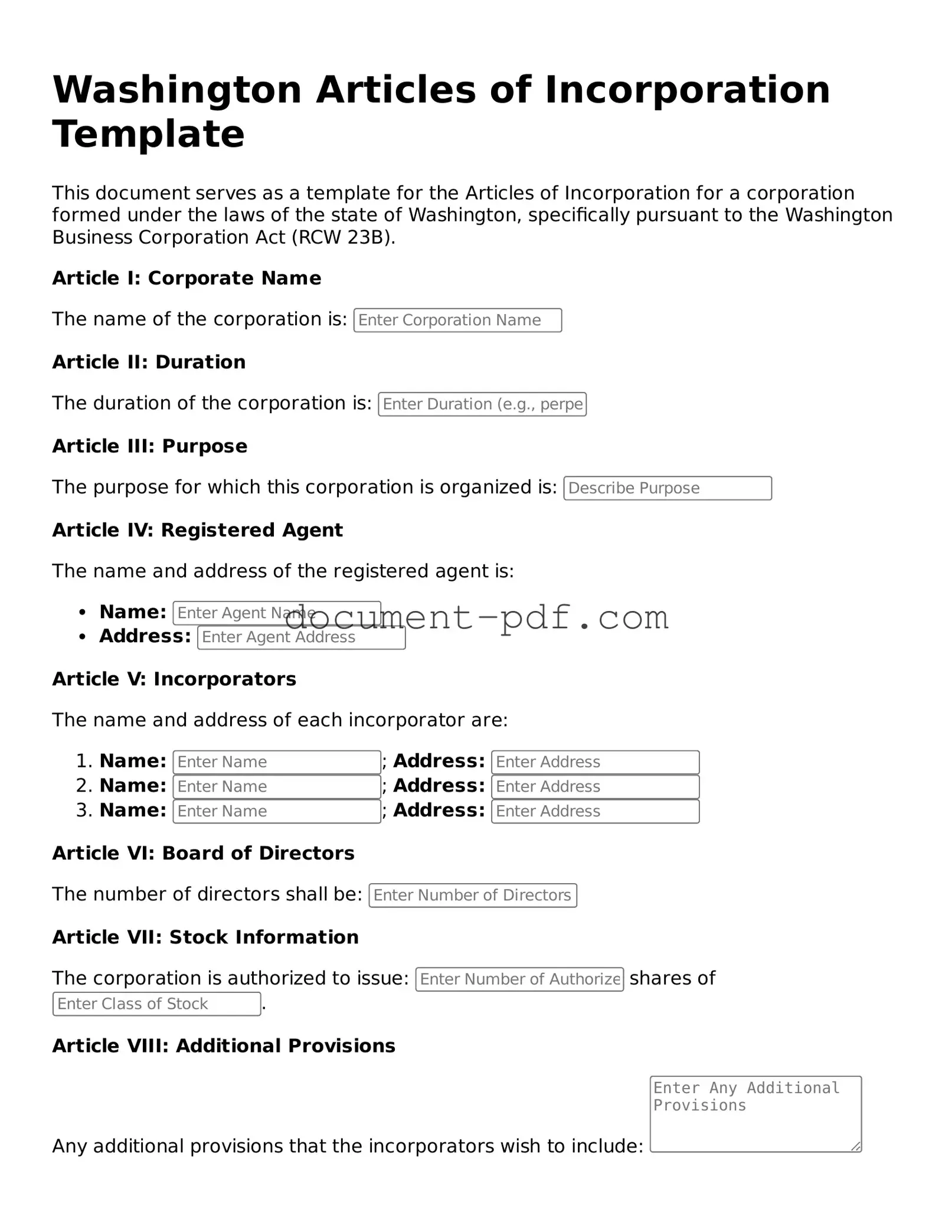The Articles of Incorporation is often compared to the Certificate of Incorporation, particularly in states like Delaware. Both documents serve a similar purpose: they officially establish a corporation as a legal entity. The Certificate of Incorporation, however, may include additional requirements specific to Delaware law, such as the designation of a registered agent and the purpose of the corporation. While the terminology may differ, the core function remains the same—creating a legal framework for the corporation's existence.
Another document that shares similarities with the Articles of Incorporation is the Bylaws. Bylaws outline the internal rules and procedures for managing a corporation. While the Articles of Incorporation focus on the external aspects of establishing a corporation, such as its name and purpose, Bylaws provide detailed governance structures. They address matters like board meetings, voting rights, and the roles of officers, thereby complementing the Articles of Incorporation.
The Operating Agreement is akin to the Articles of Incorporation but is specifically used for Limited Liability Companies (LLCs). This document outlines the management structure, member roles, and operational procedures of the LLC. Like the Articles, the Operating Agreement is foundational for the entity’s legal standing, yet it addresses the unique characteristics of an LLC, such as profit distribution and member responsibilities.
The Partnership Agreement is another document that bears resemblance to the Articles of Incorporation. This agreement is essential for partnerships, detailing the rights and obligations of each partner. While the Articles establish a corporation, the Partnership Agreement sets the framework for collaboration among partners. Both documents aim to define the structure and operations of the business, albeit in different forms.
Similar to the Articles of Incorporation is the Certificate of Formation, commonly used in states like Texas. This document serves the same purpose as the Articles, officially creating a corporation or LLC. The Certificate of Formation typically includes the name of the entity, its duration, and the address of its registered agent. Despite the different names, the essence of establishing a legal entity remains consistent.
The Statement of Information is another document that parallels the Articles of Incorporation. Required in some states, this document provides updated information about a corporation's address, officers, and agent for service of process. While the Articles of Incorporation set up the corporation, the Statement of Information ensures that the state has current details, thus maintaining transparency and compliance.
The Corporate Resolution is similar in that it formalizes decisions made by the corporation’s board or shareholders. While the Articles of Incorporation establish the corporation, Corporate Resolutions document specific actions, such as approving a merger or authorizing a bank account. Both documents play crucial roles in the governance and operational aspects of a corporation.
The ADP Pay Stub form is a document that provides employees with a detailed breakdown of their earnings, deductions, and net pay for a specific pay period. This form is crucial for understanding compensation and ensuring accuracy in financial records. It serves as an essential tool for both employees and employers in maintaining transparency in payroll practices. For those looking for reliable resources, PDF Templates Online offers various templates to simplify this process.
The Shareholder Agreement also shares a connection with the Articles of Incorporation. This document outlines the rights and obligations of shareholders, including issues like share transfers and voting rights. While the Articles of Incorporation define the corporation's existence, the Shareholder Agreement governs the relationships between those who own shares in the company, ensuring clarity and preventing disputes.
Lastly, the Business License is somewhat analogous to the Articles of Incorporation, though it serves a different function. A Business License grants permission to operate a business within a certain jurisdiction. While the Articles of Incorporation establish the corporation legally, the Business License ensures compliance with local regulations. Both documents are essential for a corporation to function legally and effectively.
